|
|
 
|
|
Author
|
Topic: Odd Screen for 1929
|
|
|
|
|
|
|
|
|
Jim Cassedy
Phenomenal Film Handler
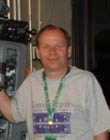
Posts: 1661
From: San Francisco, CA
Registered: Dec 2006
|
 posted 01-25-2015 10:53 AM
posted 01-25-2015 10:53 AM




I believe that Paramount Publix either owned or had controlling interest in
the Maganascope process, and they were installing it in many of their
"A-List" theatres in large cities built in the 1929-1930 time period.
The screen was equipped with both horizontal & vertical maskings:
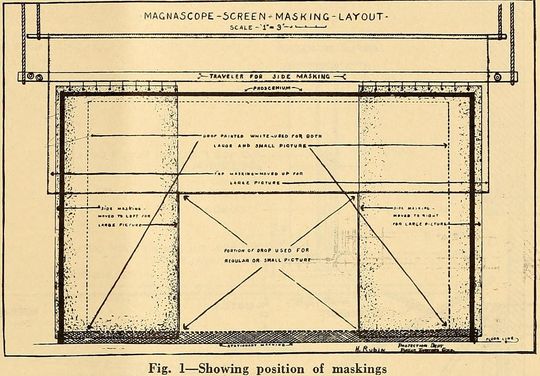
(Sorry I can't make this larger, but original exceeds the size limit)
The masking changes were made by (union!) stagehands:
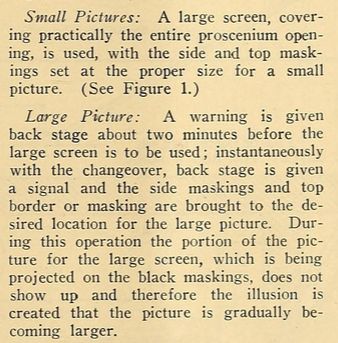
In addition to a large screen and masking system, a 'proper' installation
also used a 3rd projector.
According to old tech documents, Simplex built a special "72degree"
high speed intermittent movement for the Magnascope process:
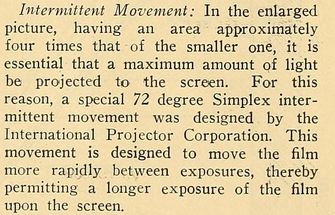
To get the larger picture, the "Magnascope Projector" was equipped with
a lens that was half the focal length of the theatre's 'normal' projection
lens, thus giving an image that was almost twice the size:
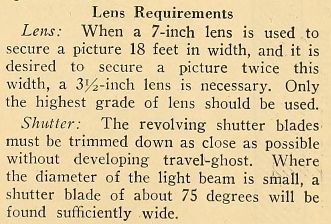
The information above came from an article in a 1929 trade journal and
was written by the head of the Paramount Publix projection department.
The same article was also published in a 1929 issue of "International
Projectionist", which, I think, you can find online someplace.
| IP: Logged
|
|
|
|
|
|
Jim Cassedy
Phenomenal Film Handler

Posts: 1661
From: San Francisco, CA
Registered: Dec 2006
|
 posted 01-25-2015 05:30 PM
posted 01-25-2015 05:30 PM




Leo- The earliest movable masking system I'm aware of was the "Vallen
Sound Mask" which came out in 1928. It only changed the masking on
the left side of the screen, which was necessary when projecting
"Movietone Aperture" prints, to eliminate the black bar you'd otherwise
have on the left edge of the image. I'm not sure these were "upgradable"
when the Academy aperture arrived on scene in 1930
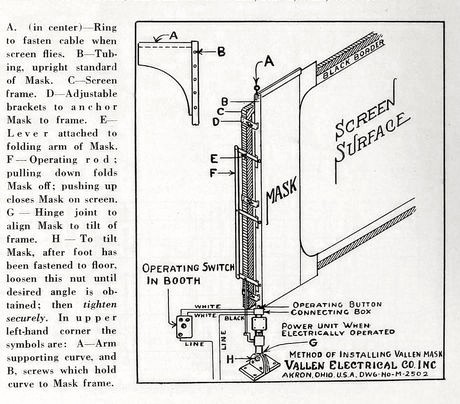
1929 Advertisement:
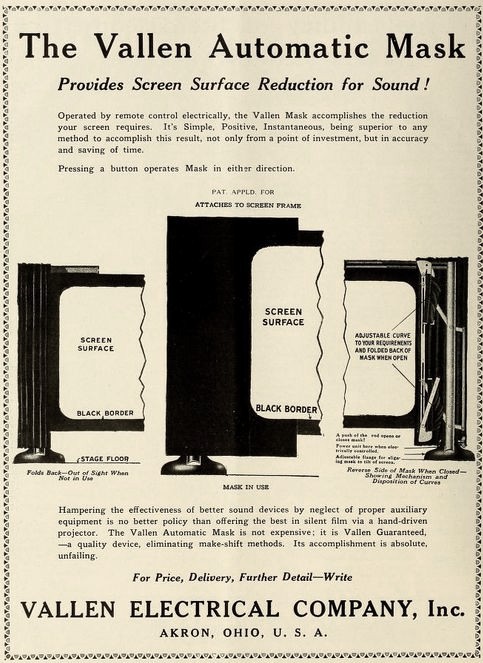
Old ads & info I have on file show it was available in both manual
and motor driven models. Interestingly, tech info I found in one
old theater manual sez that the masking motor only ran in one
direction, leading me to believe there must have been an electrically
operated reversing gear as part of the driving mechanism.
In researching my earlier reply, it seems that most Magnascope
installations included something called a "Vocalite Sound Screen":
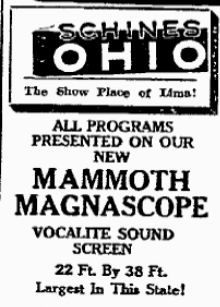
Don't know much about "vocalite" screens, other than that they
were "porous, but not perforated" . . however that worked ![[Confused]](confused.gif)

(As in interesting aside, I grew up in Roosevelt NY, but moved away
in the early 1960's, when I was very young, so I have no idea if the
"Beaded Screen Corporaton was still 'in town' back then)
| IP: Logged
|
|
|
|
|
|
|
|
|
|
All times are Central (GMT -6:00)
|
|
Powered by Infopop Corporation
UBB.classicTM
6.3.1.2
The Film-Tech Forums are designed for various members related to the cinema industry to express their opinions, viewpoints and testimonials on various products, services and events based upon speculation, personal knowledge and factual information through use, therefore all views represented here allow no liability upon the publishers of this web site and the owners of said views assume no liability for any ill will resulting from these postings. The posts made here are for educational as well as entertainment purposes and as such anyone viewing this portion of the website must accept these views as statements of the author of that opinion
and agrees to release the authors from any and all liability.
|

 Home
Home
 Products
Products
 Store
Store
 Forum
Forum
 Warehouse
Warehouse
 Contact Us
Contact Us




 Printer-friendly view of this topic
Printer-friendly view of this topic
















![[Confused]](confused.gif)




